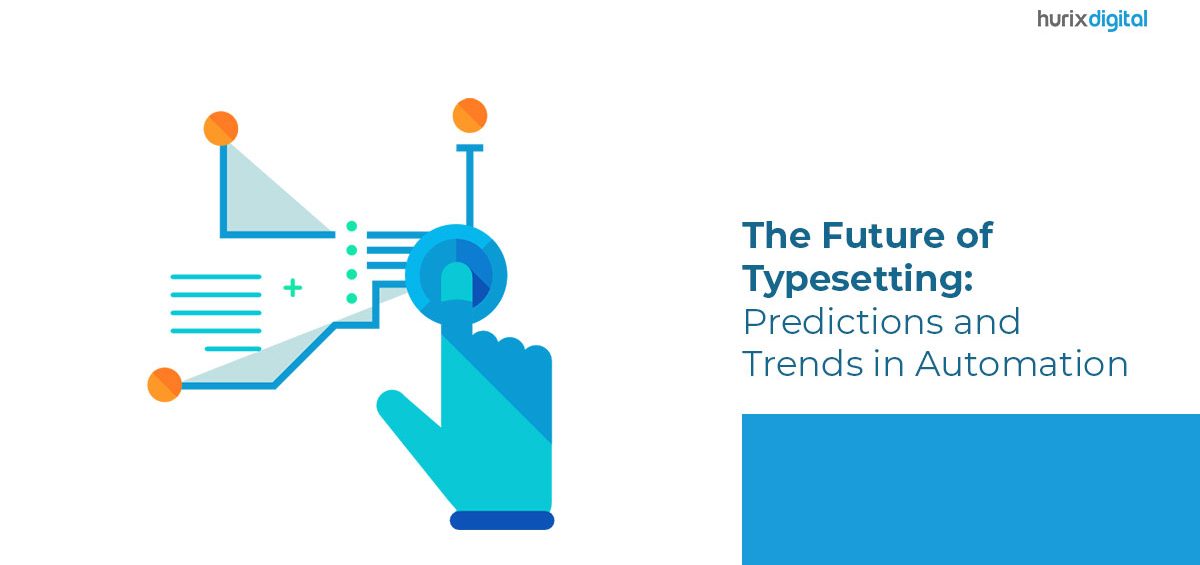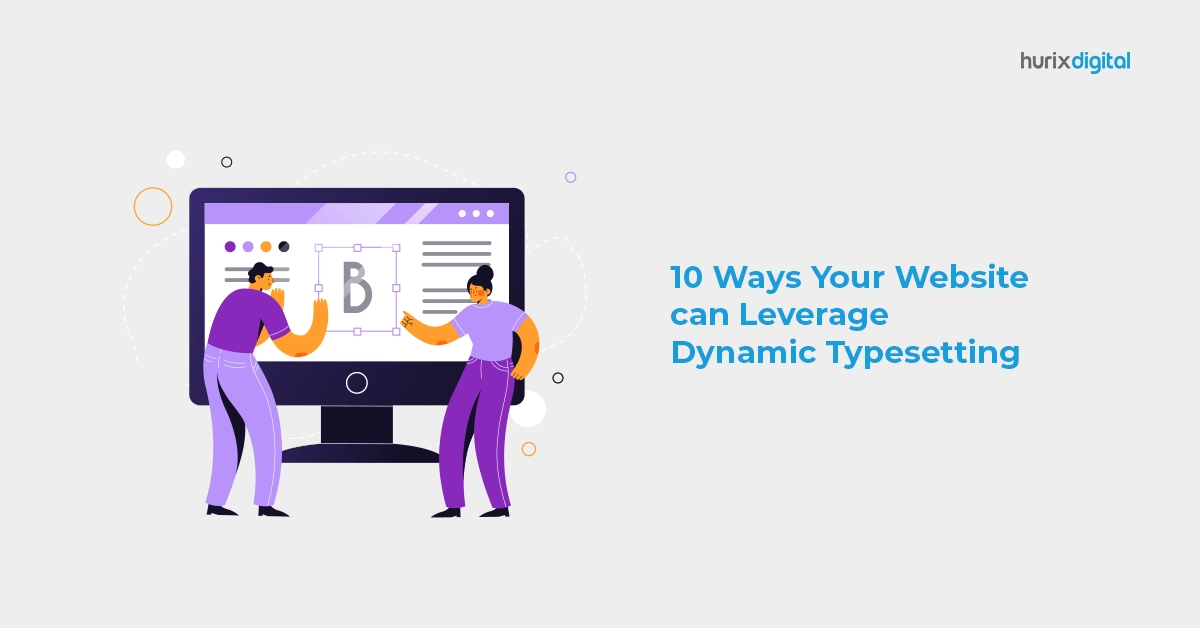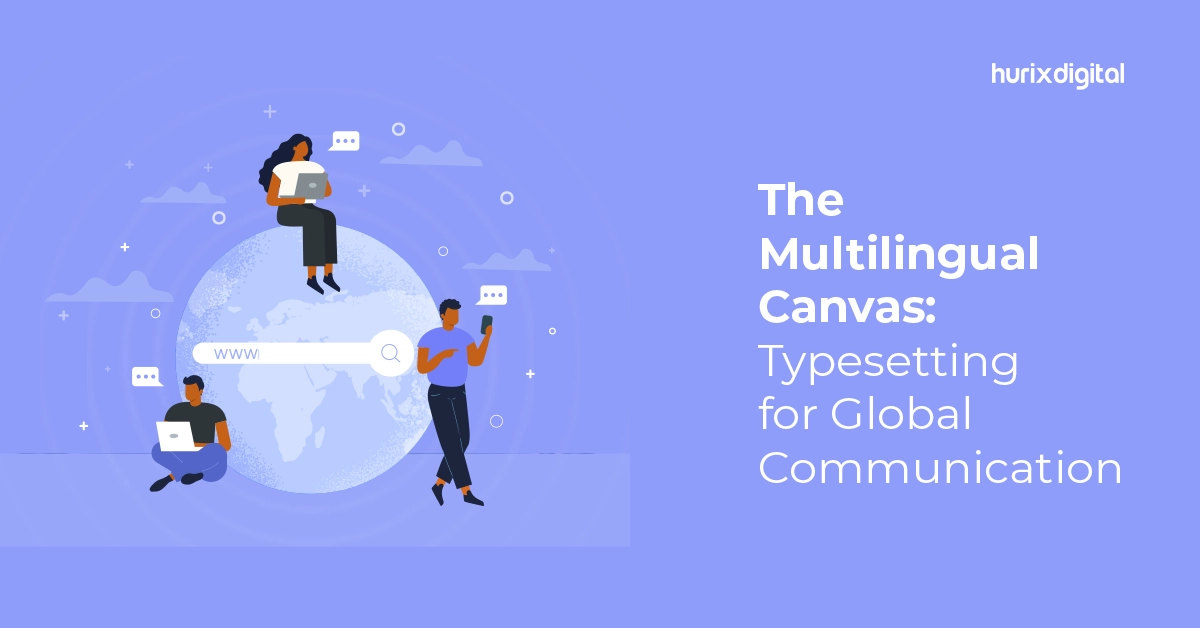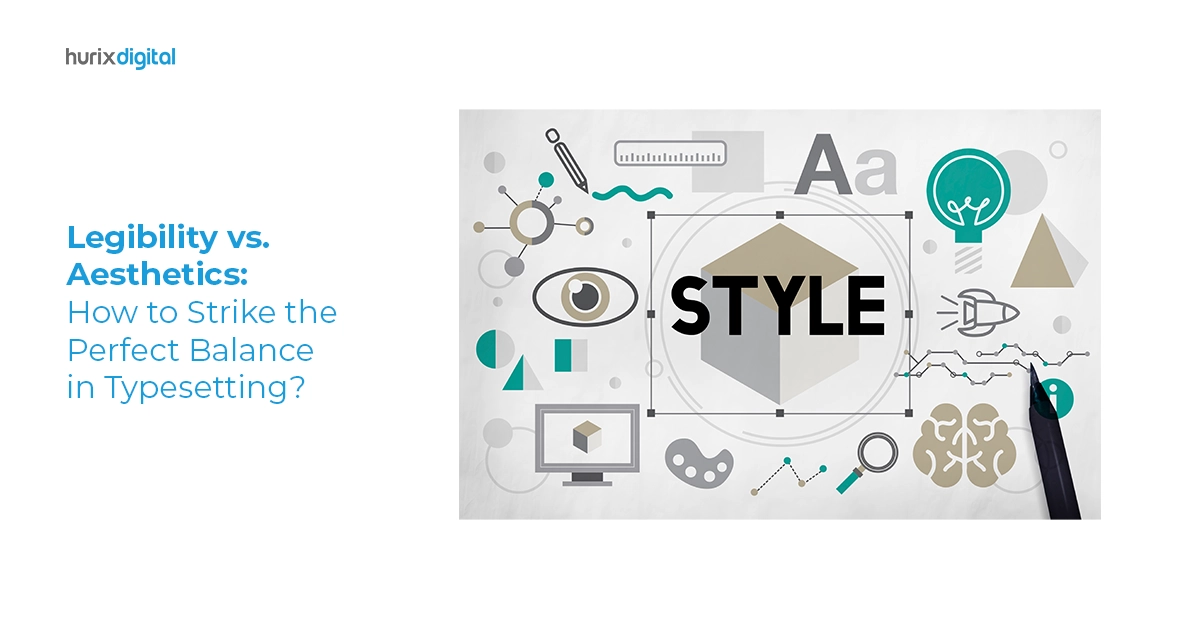Summary
This blog explores the future of the typesetting industry with automation, AI, variable fonts, augmented reality, and other emerging trends.
The typesetting industry has come a long way. What was once a time and labor-intensive process has now evolved to a stage where typesetting software can get the same work done in a fraction of the time.
With AI technology now coming to age and evolving rapidly, the question comes to mind, “What is the future of this industry?”.
This blog explores current trends and what the future holds for typesetting automation.
Table of Content
- Variable Fonts
- Artificial Intelligence in Typesetting
- Increasing Popularity in Non-Latin Scripts
- The Rise of Augmented Reality (AR) and Virtual Reality (VR)
A Brief on Typesetting
In essence, typesetting is arranging text, symbols, and other graphical elements in a way that is visually appealing and easy to read. It was the job of the typesetter now; if you are wondering, “What is a typesetter?” read on.
A typesetter is a professional who specializes in the art of typesetting. Historically, they would first arrange text using physical type, a block of either wood or metal with a character or symbol etched onto it.
They would then use a composing stick to arrange the individual pieces of type into lines of text. Once a line was complete, the typesetter would lock it into place using a metal chase. The chases were then stacked together to create pages.
Today, however, typesetters work on a computer using desktop publishing tools such as Adobe’s InDesign and QuarkXPress or latex typesetting programs, which are dedicated software explicitly designed for typesetting.
What are the Predictions and Trends in Automation Typesetting Industry
The RPA market is expected to grow to $20.1 Billion by 2030. While AI is one of the trends we will discuss here, other exciting innovations will significantly shape the typesetting industry’s future.
Let us take a close look at a few of them.
1. Variable Fonts
Variable fonts have transformed the world of typography and, in turn, the typesetting industry. Traditionally, the weights and the various types of each font were stored in multiple font files, which impacted the overall file size. It is a crucial consideration in web typography, where page load times are critical.
Variable fonts are a new type of font that contains a single file that can be manipulated to any size, weight, and style. With traditional fonts, you are limited to the weights and styles that the font designer has provided. Designers can create custom fonts that suit any design needs with variable fonts.
Here are the primary benefits that variable fonts will bring to the typesetting industry.
- They will reduce the file size of a font family by up to 90%, as all of a font’s possible weights and styles will be stored in a single file.
- They will greatly improve the performance of web pages as web browsers will only need to download a single font file rather than multiple font files.
Perhaps the biggest change variable fonts will bring to the world of typesetting is the ability to create responsive typography. Simply put, the font can automatically adjust its size, weight, and style to fit the size of the screen or the device it is being viewed on.
2. Artificial Intelligence in Typesetting
One cannot talk about new trends or predictions without the mention of Artificial Intelligence in 2023. And this holds for the typesetting industry as well.
Typesetting software such as Adobe’s InDesign has already started reaping the benefits of AI using Adoble’s homegrown AI tech named Sensei. It can:
- Analyze the contents of a draft and suggest optimal layouts based on the type and length of the content.
- Generate layouts automatically based on predefined templates or design guidelines.
- Provide intelligent suggestions for design elements such as fonts, colors, and images to create visually appealing content and
- Analyze text, and recommend typography styles, line spacing, and other design elements that will enhance content’s readability and visual appeal.
These capabilities are just the tip of the iceberg in terms of the power AI holds to transform this field. While AI has still not made its way into latex typesetting, we hope it will soon.
Also Read: Top Automation Tools for Efficient Typesetting Workflows
3. Increasing Popularity in Non-Latin Scripts
Non-Latin scripts are gaining popularity as our world gets more multi-lingual. Non-Latin script typesetting presents unique problems, but we are seeing new techniques and resources that will help typesetters effectively overcome these hurdles.
Font libraries now include various options for non-Latin scripts, enabling designers to create visually appealing and culturally appropriate typography. Furthermore, typesetting companies are continually improving their software’s support for non-Latin scripts, facilitating seamless integration and collaboration worldwide.
4. The Rise of Augmented Reality (AR) and Virtual Reality (VR)
Apple’s recent introduction of the Vision Pro Goggles gave us a glimpse into the future of how we may work and consume content. It opens up exciting opportunities for typography and the typesetting industry to explore innovative ways of presenting the written word.
Augmented reality can facilitate interactive typographic experiences enabling users to engage with and manipulate typography within the virtual world. On the other hand, virtual reality will provide designers and typesetters with the opportunity to create immersive typographic environments.
It can be done by utilizing three-dimensional space to craft distinctive and captivating experiences. These innovative technologies could dramatically change how we perceive and interact with typographic content.
Also Read: Automating Multilingual Typesetting: Challenges and Solutions
The Continued Importance of Human Creativity
No matter how much technology infiltrates the typesetting industry, it is crucial to under that nothing can replace the “human factor.” Yes, AI in the latest typesetting software does everything from generating optimal layouts to automatically deciding which font works best for specific content.
That said, the increasing demand for personalized experiences or the ability to evoke certain emotions to craft memorable brand identities is something no amount of technology can emulate – at least at the moment.
To put it succinctly, a combination of automation and human creativity will likely characterize the typesetting future.
Hurix Digital is the place to go if you need a quality typesetting service. We have a fantastic team of highly skilled and experienced typesetters who can assist you in creating the right design and providing your audience with the best reading experience possible. As a typesetting company, we endeavor to give the best services possible.
To discover more about our typesetting services, contact us today.











